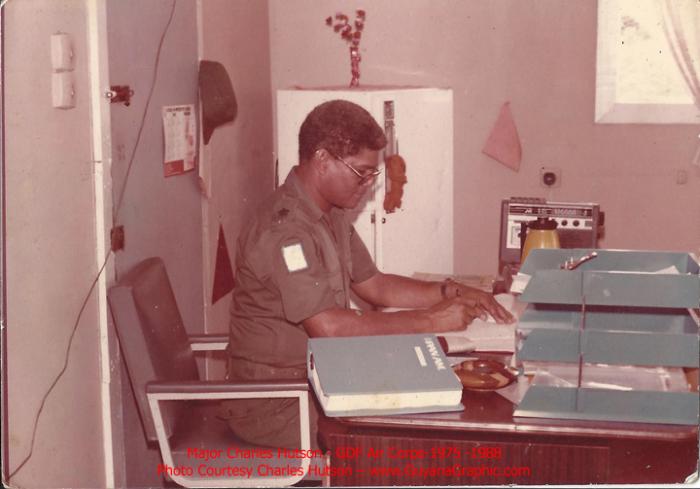In the aftermath of a Bell 412 EPI helicopter crash in the dense jungles of Guyana on December 6, 2023, the focus has shifted to the vital role of the Cockpit Voice Recorder (CVR) and Flight Data Recorder (FDR)—commonly referred to as the “black boxes.” These devices are indispensable in aircraft accident investigations, providing crucial insight into the moments leading up to the crash. However, in a shocking twist, it was reported that the black boxes from this crash were severely damaged, raising questions about their reliability in such an incident.
The Incident and Initial Findings
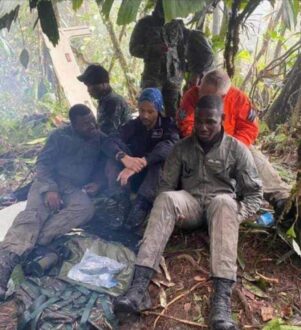
The crash involved a Guyana Defence Force (GDF) Bell 412 EPI helicopter, leaving two survivors. A Demerara Waves article published on October 19, 2024, quoted a well-placed source as saying, “The cockpit voice recorder… was badly damaged.” Aviation Minister Juan Edghill confirmed that the “black box was damaged,” which might force investigators to rely primarily on the survivors’ accounts rather than the data typically recorded by the helicopter’s CVR/FDR.
This revelation has led to public concern that the official investigation may lack the hard data needed to uncover the root cause of the crash. However, given the technical sophistication of the helicopter’s Multi-Purpose Flight Recorder (MPFR), a combined CVR/FDR, total destruction seems unlikely—prompting a closer look at the facts surrounding the technology and its capabilities.
Understanding the Bell 412 EPI and Its Recording System
The Bell 412 EPI, registration 8R-AYA, is a technologically advanced helicopter equipped with a Pratt & Whitney PT6T-9 Twin Pac engine and the Bell BasiX-Pro integrated glass cockpit system. The aircraft was originally manufactured by Bell Helicopter Textron Canada as a Bell 412EP in 2014, and first registered as C-GZIV under Serial Number 37002. It received its first airworthiness certificate on December 17, 2014, under Registration Number N-533BB. The helicopter’s MPFR, manufactured by Curtiss-Wright Defense Solutions, is a state-of-the-art device designed to withstand extreme conditions.
The MPFR records a minimum of 25 hours of flight data and two hours of cockpit audio, using four separate audio channels to capture every conversation, alert, and environmental sound in the cockpit. The flight data is stored in solid-state memory, and audio data is digitally formatted. The data is easily retrievable, typically within five minutes, through ground station equipment or wireless recovery options.
Rigorous Specifications: Built to Survive
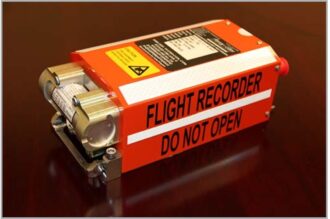
The MPFR is not just a simple recorder—it is engineered to endure catastrophic events. Its specifications surpass both EUROCAE and FAA requirements for crash survivability:
- Impact Resistance: Withstands up to 3,400 g-force for 6.5 milliseconds.
- Fire Resistance: Survives 1,100°C (2,012°F) for 60 minutes, and 260°C (500°F) for 10 hours.
- Static Crush Resistance: Endures up to 2,270 kg (5,000 lbs) of pressure for five minutes.
- Penetration Resistance: Designed to withstand a 227 kg (500 lb) object dropped from three meters.
- Deep Water Immersion: Functions after being submerged at depths of up to 20,000 feet (60 MPa).
Additionally, the MPFR is protected by an ultrasonic locator beacon, which helps recovery teams locate it within 90 days of the crash. It is typically installed in a rear-left compartment near the tail boom, counterbalancing the avionics at the front of the helicopter. This location is strategically chosen for optimal protection in the event of a crash, as the rear is often less exposed to direct impact.
The Puzzle of the Damaged Black Box
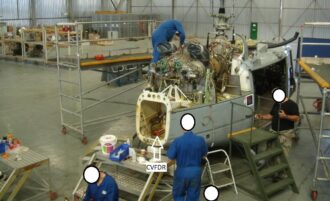
Given the MPFR’s formidable durability, its “damage” in this crash raises several critical questions. The Bell 412 EPI’s black boxes are designed to survive conditions far worse than what is typically experienced in helicopter accidents, even those involving fire or high-impact forces. With the MPFR’s placement in a secure rear compartment and its rugged design, the complete destruction or corruption of data seems highly improbable unless extraordinary circumstances occurred.
Even in the event of fire and high-impact damage, the MPFR is constructed to preserve its data—both voice recordings and flight performance metrics. Given this, the reported damage may not pertain to the physical destruction of the device but rather a more technical issue, such as difficulties retrieving the data due to environmental interference or hardware complications.
A More Likely Scenario
Rather than total destruction, it is possible that the black box sustained partial damage, making immediate retrieval of data difficult but not impossible. The helicopter’s MPFR is engineered to protect its internal components even in the most extreme conditions, so it may be that the recovery process was slowed, but not entirely thwarted.
Additionally, while the survivors’ testimonies offer important insights, it is highly likely that the MPFR contains recoverable data that can corroborate or challenge their accounts. The focus now should be on conducting a detailed forensic analysis of the black box, as modern recovery techniques can extract useful data from seemingly damaged units.
Conclusion: Hope for a Complete Investigation
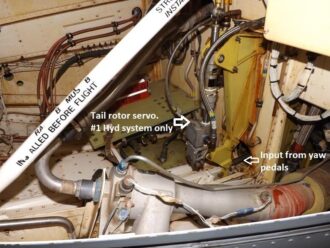
The Bell 412 EPI crash presents a complex scenario, but the notion of the CVR/FDR being entirely destroyed should be met with skepticism. Given the robustness of the MPFR and its ability to withstand extreme conditions, investigators may still be able to recover crucial data that will lead to a thorough understanding of the events leading up to the crash. While survivors’ accounts are invaluable, the MPFR remains the most objective source of truth in this investigation, and its recovery is key to piecing together the full picture of what went wrong.
The Bell 412 EPI is a sophisticated aircraft with cutting-edge technology designed to enhance safety. The fact that the MPFR is built to such high standards suggests that the data it holds could still unlock the mystery of the crash, offering critical lessons for aviation safety moving forward.





